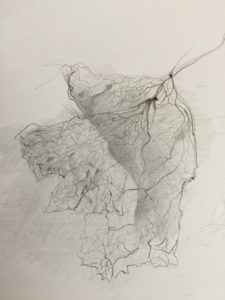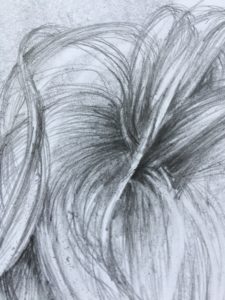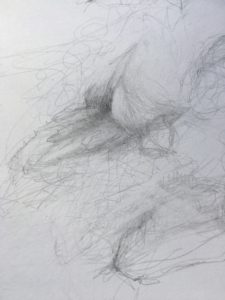Welcome to my new learning log, ‘Sustaining Your practice’. the final section of Part 3 in the Painting Degree Course, with the OCA.
The introduction to this part of the course begins with a quote from Chris Ofili, “The studio is a laboratory, not a factory. An exhibition is the result of your experiments, but the process is never-ending. So an exhibition is not a conclusion.”
The concept that the making of art is a constant process and the studio, a laboratory,is proving an excellent kicking off point as I begin the final stage of the course. My final Artist’s Statement is providing the focal points at the moment for the direction of the work. It reads:
“INNER AND OUTER SPACES”
‘Listening’ is the sense which is assuming the most significance for me in my practice. Seeing the world through the lens of listening and memory allows for new views of reality. In my Contextual Studies research essay, “Is my art practice a question of country?” I have quoted Paul Moorhouse, Senior Curator of Twentieth Century Portraits and Head of Collection Displays (Moorhouse 2017, 14) when he writes, “We attempt constantly to fathom the significance of the world we inhabit. We do so by interpreting its visual characteristics. The appearance of things is our constant point of reference. However it is plain that the reality of things is not entirely – if at all – a matter simply of how they seem. To grasp the world and its occupants in a fuller and more complete way, we must reach beyond the mere apparent.” (ibid, page 16) Reaching beyond the mere apparent for me means responding to a ‘sensing’ of the landscape, the sensory experience of sound, memory, events, smells, colours and translating this into a personal visual language.
My present body of work is entitled ‘Inner and Outer Spaces” and uses my garden as its focus because of the present boundaries imposed by the virus. The language and songs of the birds have been a longstanding fascination for me and with the present lockdown on human activity, the birds are taking over the skies and the garden. My work is exploring ways to express the sounds of the garden which, although seemingly ephemeral, reignites ideas about the sonic landscape and its potential for understanding more about what really is.”
With the focus on the garden and the emergence of Spring, the first drawings explore the beauty of the fading of nature and the emergence of new life.
The focus is always on the ‘sound’ and so it wasn’t visual representation which I was looking for here and yet I find that it provides a starting point. The ephemeral aspect of sound is in the softness of the line drawing and it suggested a different appraoch to experiment with…WIRE!
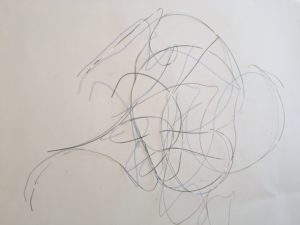
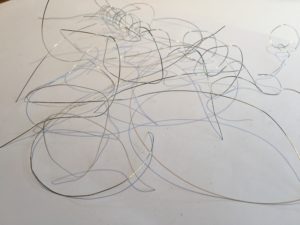
The wire was now allowing for further exploration than just the visual image, of new life in the garden. I then worked with paint again and using a variety of different tools made from old pieces of wood, screwed up sticky tape etc, applying the paint in different ways, to explore new marks…
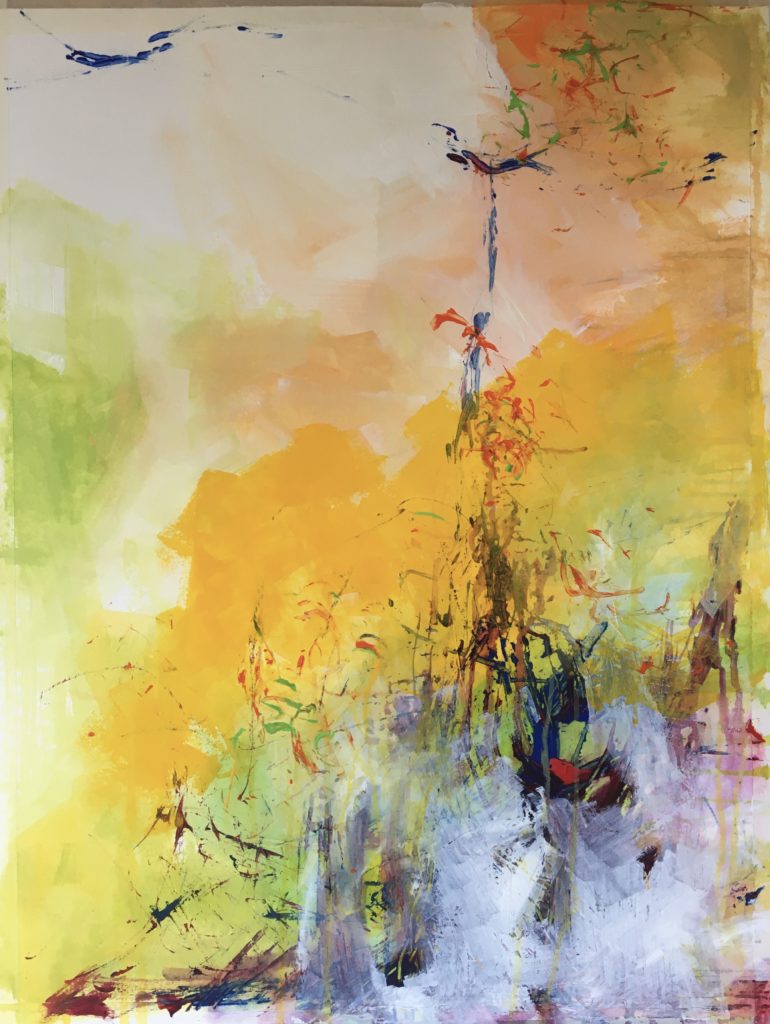
This image was presenting an explosive sound which I felt pleased with. The different tools used provided a variety of new marks and the soundscape revealed a sense of emergence.
The soundscape is a constantly changing phenomenon. In his book, ‘The Soundscape – our sonic environment and the tuning of the world’, R. Murray Schafer begins with Walt Witman’s words from Song of Myself,
Now I will do nothing but listen…
I hear all sounds running together, combined,
fused or following,
Sounds of the city and sounds out of the city, sounds
of the day and night…
In my work I am finding the need for constant exploration and experimentation with different mediums in order to discover the creative possibilities of a visual representation of the soundscapes we live in.

